Like any other piece of equipment, a chainsaw needs regular care and maintenance for optimal performance. While it’s possible to pay a professional to sharpen your chainsaw, the average homeowner, with a little bit of research and practice, can do the task themselves, saving a bundle in the process.
If you’ve noticed that your chainsaw isn’t making clean cuts like it used to, it may be time to find out how to sharpen the blade and identify whether or not the teeth are dull. If you’re unsure what to do, here’s some advice on how to sharpen a chainsaw chain and maintain it.
Equipment and Supplies
- The chainsaw file
- Safety glasses
- Gloves
- Mineral spirits
- Cloth
- Screwdriver
Understanding the chainsaw’s fundamental components is necessary for maintenance. The components listed below are commonly found in most models owned by homeowners:
- Engine
- Drive system
- Support bar
- Notch
- Chain
- Depth gauge
- Gullet
- Bolt hole
- Toe
- Heel
- Main plat
- Lateral plate
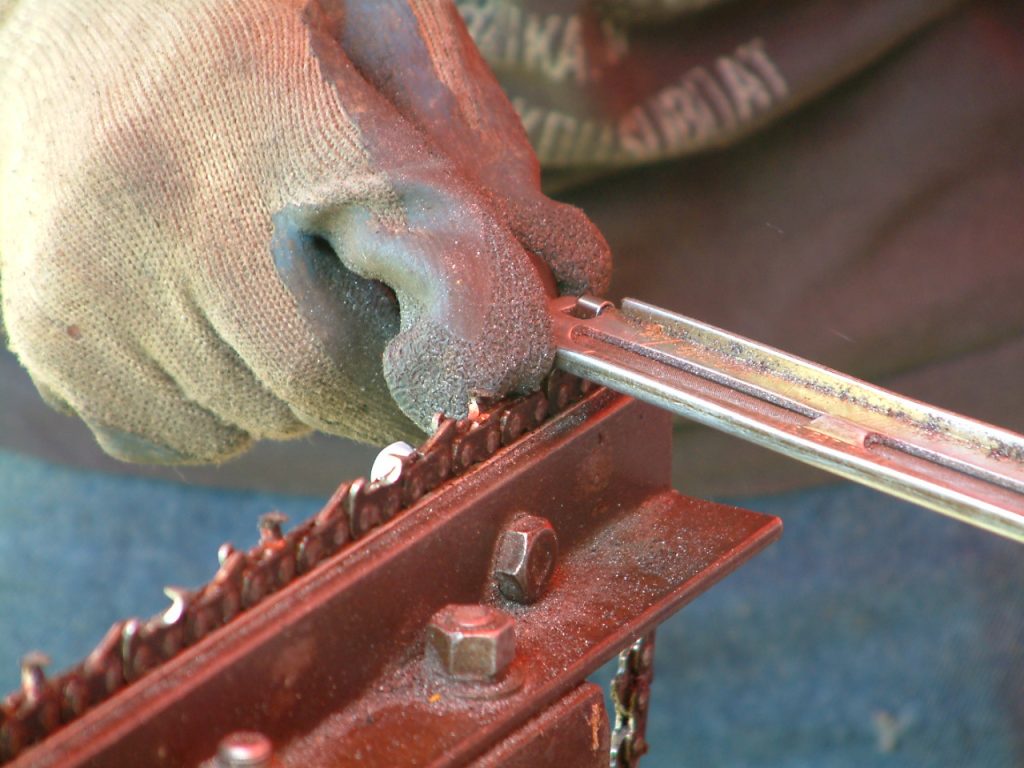
Picking the Proper Chainsaw File
Similarly to how chainsaw teeth come in a specified size and form, so do the files. If the file is too large or too tiny, it may be difficult to sharpen the blade properly. There are numerous more sizes available outside the most popular 4 mm, 4.8 mm, and 5.5 mm files. Always double-check the instructions to be sure you’ve got the right file.
- Files of 4 millimeters are often used with chainsaws with a 0.25-inch chain pitch. The depth gauge’s corresponding reference code is 1.
- If the depth gauge’s code number for the 0.325-inch chain pitch is 2, sharpening the chainsaw requires a 4.8-millimeter file.
- For chainsaws with a 0.404-inch chain pitch, the file size indicated by the number 4 on the depth gauge is 5.5 mm.
The Art of Chainsaw Chain Sharpening
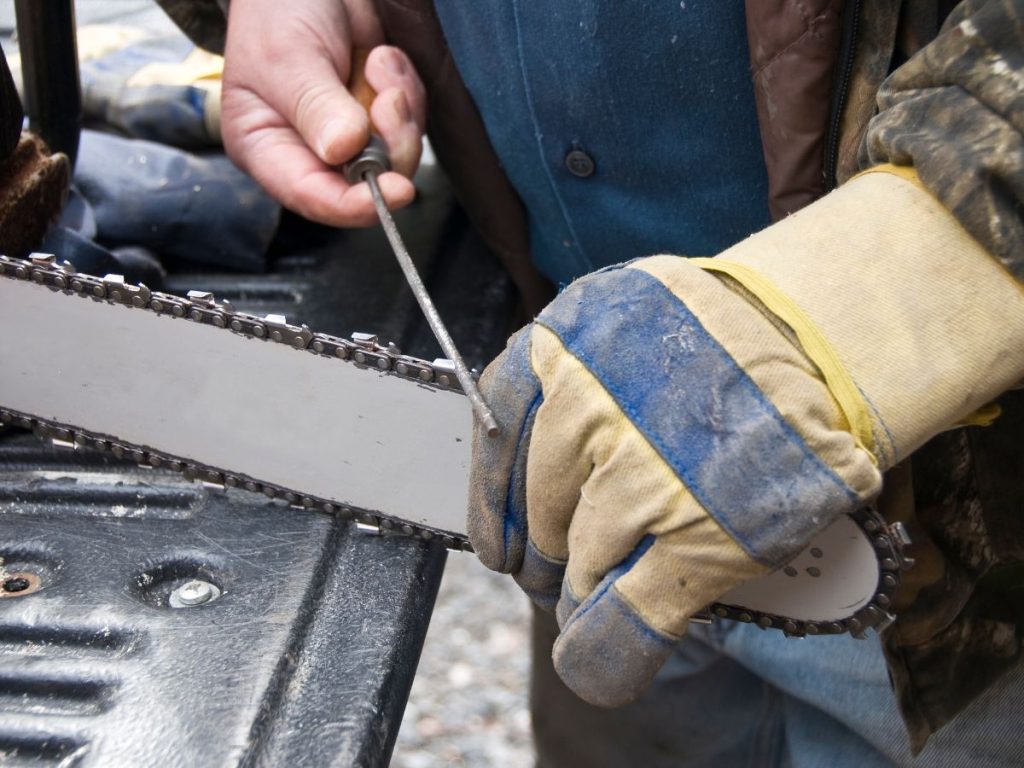
A chainsaw is simpler and safer to operate when it is sharp, which reduces machine wear and tear and increases overall effectiveness. There are signals to watch out for those wondering whether their chainsaw chain needs sharpening. If you see any of the following signs, you should get a sharpening right away:
- Watch out for the shattered chainsaw. In order to cut wood efficiently, a dull saw will spit out dust instead of tiny chips.
- Just as when you need more effort to cut through wood, it’s an indication that the chain’s teeth are dull.
- If the blade pulls to one side more than the other, this is another sign that the chain needs sharpening. If the cutting teeth on your chainsaw chain are unequal, you should sharpen them.
Step-by-Step Guide on Sharpening a Chainsaw
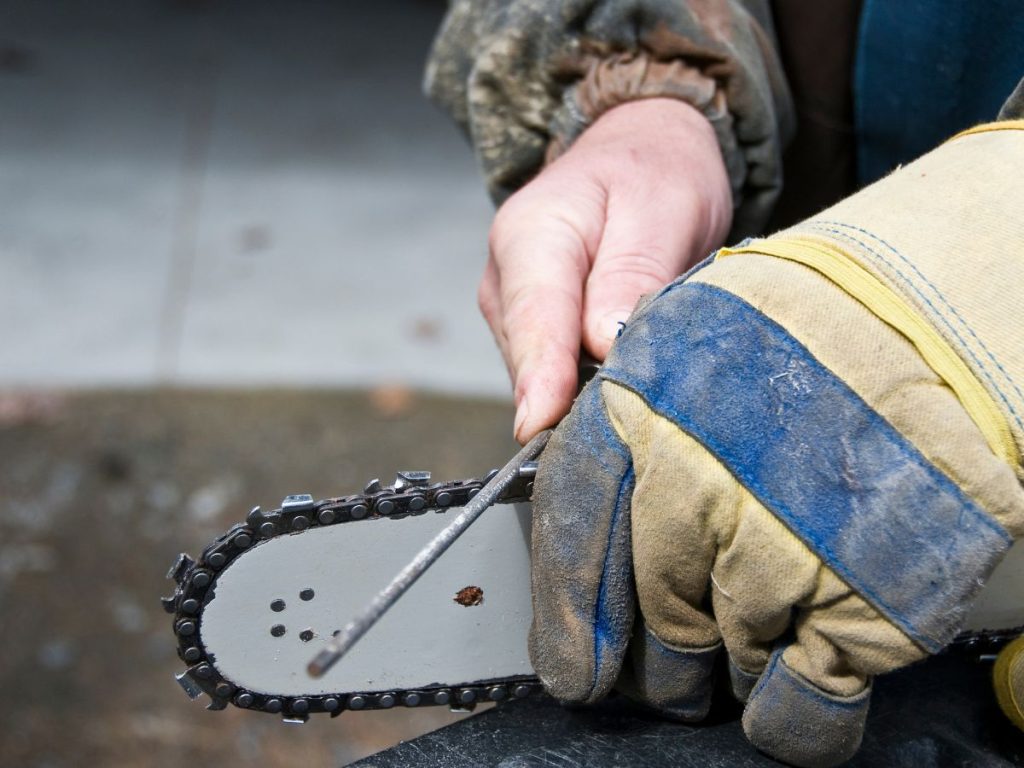
Depending on your preference, you may sharpen a chainsaw in one of two ways:
- The first option is to use an electric chainsaw sharpener to do the job. (Electric chainsaw sharpeners are a must-have if you often cut down trees.)
- Another method involves utilizing muscle, perspiration, and sharpening files to get a razor’s edge.
Given that most people who need a chainsaw sharpened are not professionals, the advice below focuses on the manual approach to utilizing a chainsaw sharpening tool. Due to the fact that the chainsaw chain is made up of individual teeth, you will require a chainsaw file that is proportionally sized to those teeth. You’ll most often see 3/16-inch, 5/32-inch, and 7/32-inch diameters.
1. Chainsaw Chain Cleaning
Put on your protective gear, such as gloves and goggles. The next step is to clean the chain completely, getting rid of any oil, dirt, or other debris that may be present. You can do this using a screwdriver and a used towel. Using mineral spirits may also be necessary, depending on the quality of the chain.
In case any of the teeth are broken, the chain should not be used, so make sure to check the chain while you are cleaning it. It is possible that the chain has to be fixed or replaced before you can even begin sharpening the saw.
2. Adjust the Tension of the Chain
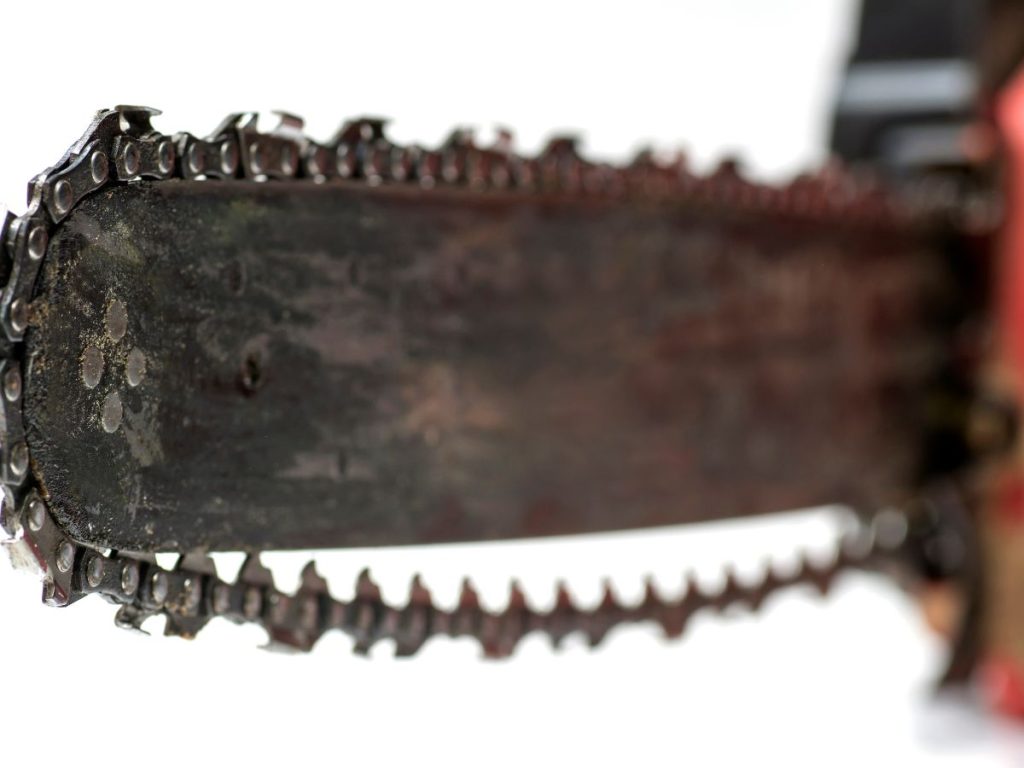
It’s essential to properly adjust the chain tension on your chainsaw before using it. A loose chain on a chainsaw increases the likelihood of a kickback or the chain being flung off the guide bar. If a chain is excessively tight, it may not move at all, or it may create more friction, generating more heat. Overheated parts have a much shorter lifespan and increase the danger of fire.
The chain tensioning screw is usually located on the side or front of the saw. Turn it clockwise to tighten the chain or counterclockwise to loosen it. This will prevent the chain from slipping. To ensure the chain works appropriately, test it by dragging it below the guide bar until a few links come loose. When the chain is properly tight, it will snap back into place when released. The chain is too tight if you cannot remove it from the bar. The chain is too loose if it doesn’t snap back into place when released.
3. Secure the Chainsaw
When filing the chain, it is important first to secure the chainsaw tightly. Some prefer to use a vise to secure the chainsaw, with the guide bar clamped in a position that allows the chain to revolve freely. If you can’t find something stable enough, you might always ask a friend to hold the tool for you.
4. Always Start Sharpening With the Smallest Cutter
Find the chain with the smallest cutting blade. This is the place to start with the chainsaw sharpening. If your cutters are all the same height, you may begin with any tooth on the chain. Keep sharpening in the same direction by marking the first chainsaw chain you sharpen with a pen, highlighter, or even nail paint.
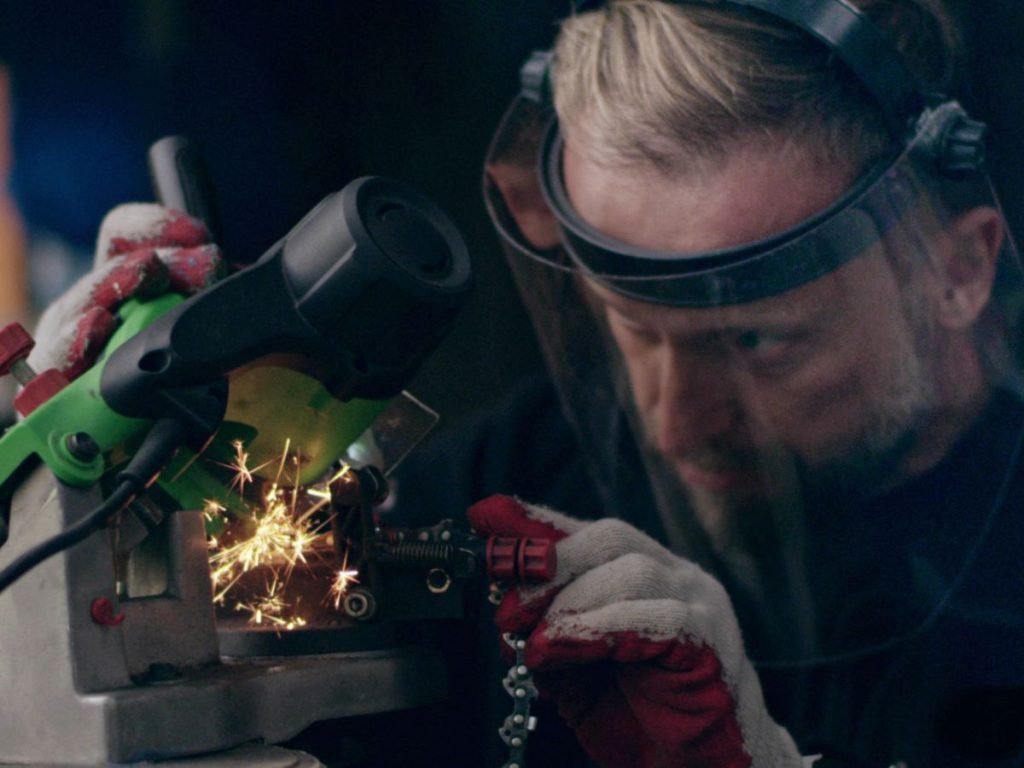
5. Clean the Teeth Angularly
Place the file into the cutter’s notched tip. Gently twist the file as you move it over the teeth to create friction. Keep the file at the same angle at which you ground or filed the notch. After you’ve filed the first cutter, repeat the process with every other cutter in the chain.
6. Sharpen the Chain on the Opposite Side
You should turn the saw around and file the teeth you missed on the first cut. When you’re done, the length of the flat tops on each cutter should be identical throughout the board.
7. Inspect Your Depth Gauges
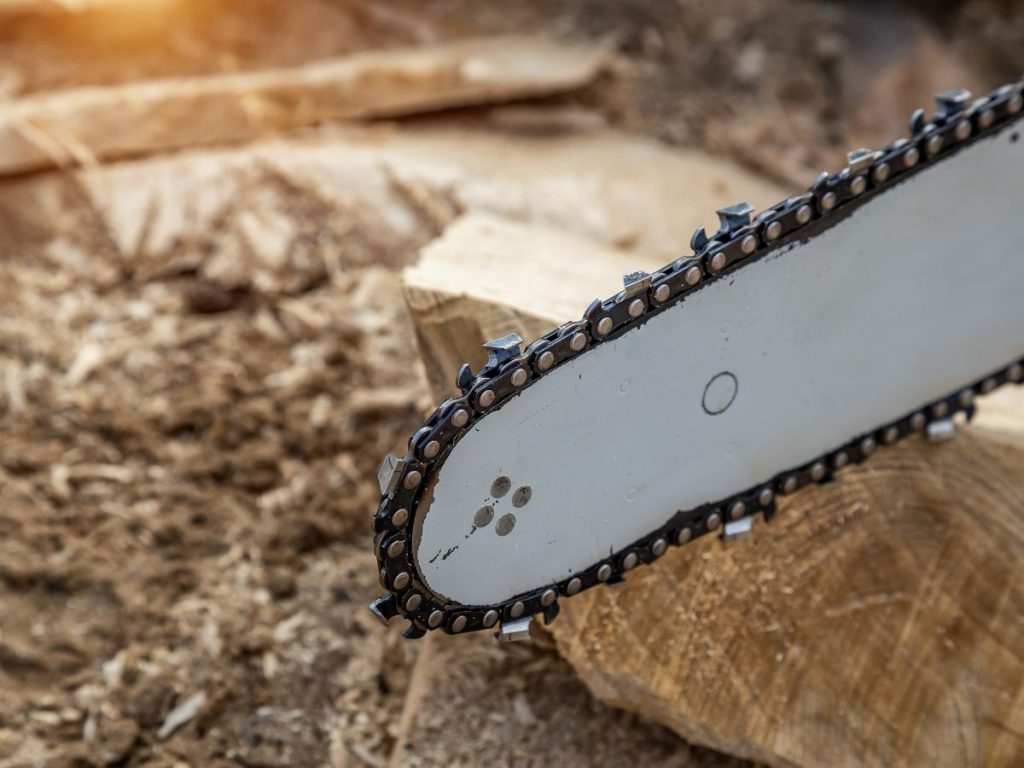
Check the depth gauges as the last step (these are the coiled connectors that hold the cutters together). You want each raker (depth gauge) to be shorter than the cutter next to it. If you have a depth gauge larger than the adjacent cutter, you may reduce the height of the raker by filing it down to around 0.1 inches.
Using an Electric Chainsaw Sharpener To Sharpen
To choose the suitable sharpening stone for your electric chainsaw and get the ideal tooth angle, it is necessary first to identify the pitch and gauge of the chain.
Secure the chainsaw chain in the vise and set it on the sharpener. You may sharpen the present cutting tooth by lowering the grinding wheel to the chain after you’ve adjusted the proper angle based on the grinding angles chart (usually supplied with an electric chainsaw sharpener). When you’ve aligned the chain with the following cutting teeth, tighten the vice and use the grinding wheel to get a good edge.
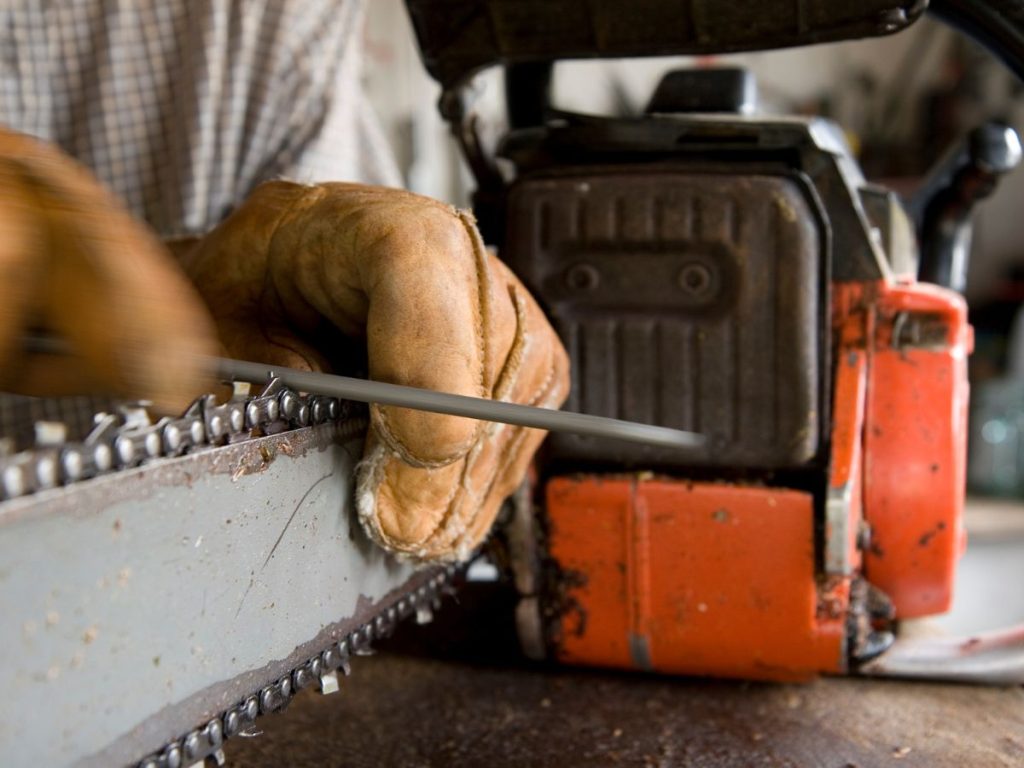
Also, some helpful hints are provided below:
- It is important to properly size the chainsaw chain and check the product handbook for optimal sharpening results.
- Set the wheel depth stop appropriately to prevent the grinding wheel from coming into contact with the chain chassis.
- If you want to avoid constantly swapping hands, finish the cutting teeth on your right side first, then the left.
Maintenance of the Chainsaw Blade
Your chainsaw’s operation and upkeep will vary depending on whether you use it rarely to chop firewood or often to maintain the forested parts of your property.
Read the chainsaw’s handbook to find out how to properly maintain your model.
Bar and chain oils, often petroleum-based, are required for the smooth operation of almost every component of a chainsaw. To do this, you need to add the lubricating oil to the saw’s chain oil reservoir, where it will be slowly dispersed to help the saw flow efficiently while you work.
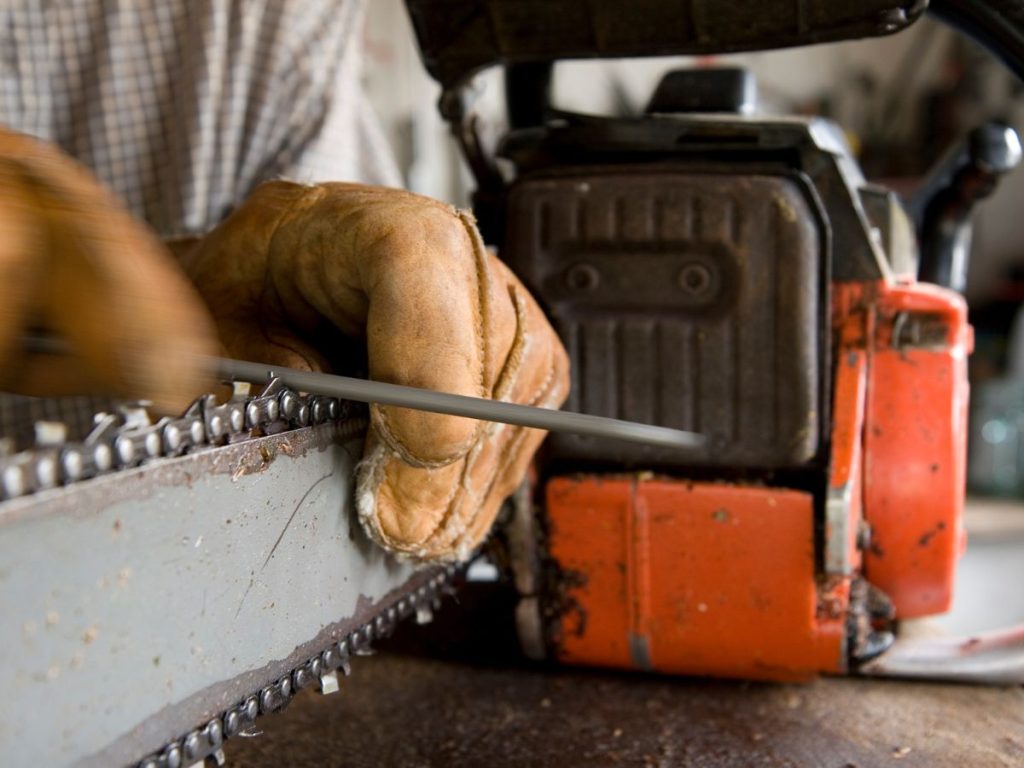
Also, here are a few suggestions:
- Check the motor and chain on a regular basis and lubricate them if required.
- Check the tool’s oil level often to ensure it is adequate.
- If you want to keep your chainsaw in good working order without any issues, you should check the guide bar every time before you use it. When used improperly, it might get twisted or bowed.
- It’s smart to stop sometimes to check this crucial part of what is, after all, potentially deadly machinery.
Wrapping Up
Keep in mind that the more often you use it after learning how to sharpen a chainsaw, the more often it will need to be sharpened. In order to keep the chain sharp when operating the chainsaw for long periods of time throughout the day, it may be necessary to take breaks. Certain parts of your chainsaw are going to wear out before others. If you use your saw often for chopping tree limbs, keeping the part right around the blade in good condition is especially important.
Keeping a chainsaw in tip-top shape is a simple enough activity to be enjoyed by do-it-yourself enthusiasts. While sharpening and cutting, always use the proper safety gear. Wear chainsaw chaps, a protective vest, and safety goggles to protect yourself from cuts and punctures.
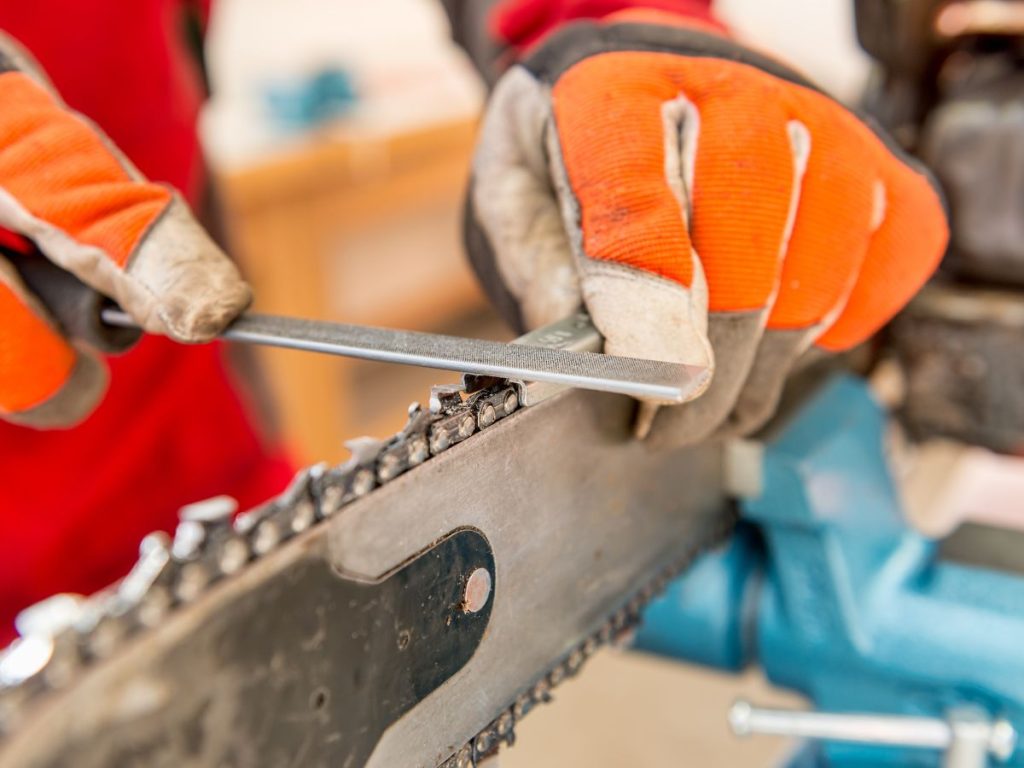
Frequently Asked Questions
Learning how to sharpen a chainsaw will save you time and money if you use your chainsaw often. Although it’s a simple procedure, many people have questions about it. If you are one of them, you may find the answers to some of the more common ones below.
What is the correct tension for a chainsaw chain?
Just pull a few chain links down from the bottom of the bar to test the chain’s tension on your chainsaw. If you let go of the chain, it should return where it belongs.
You won’t be able to unlink the chain from the bar if it’s too taut. But if the chain is too slack, it won’t tighten up. There should be tensioning screws on the front or sides of the chainsaw to adjust the chain’s tension.
When is it time to change the chain on your chainsaw?
If you keep your chainsaw well-maintained and routinely sharpened, you should be able to tell immediately when it’s time to change the chain. Check the chainsaw for typical signs of wear and tear, such as scratches, rust, unequal cuts, and a chainsaw blade that consistently overheats and smokes during usage.
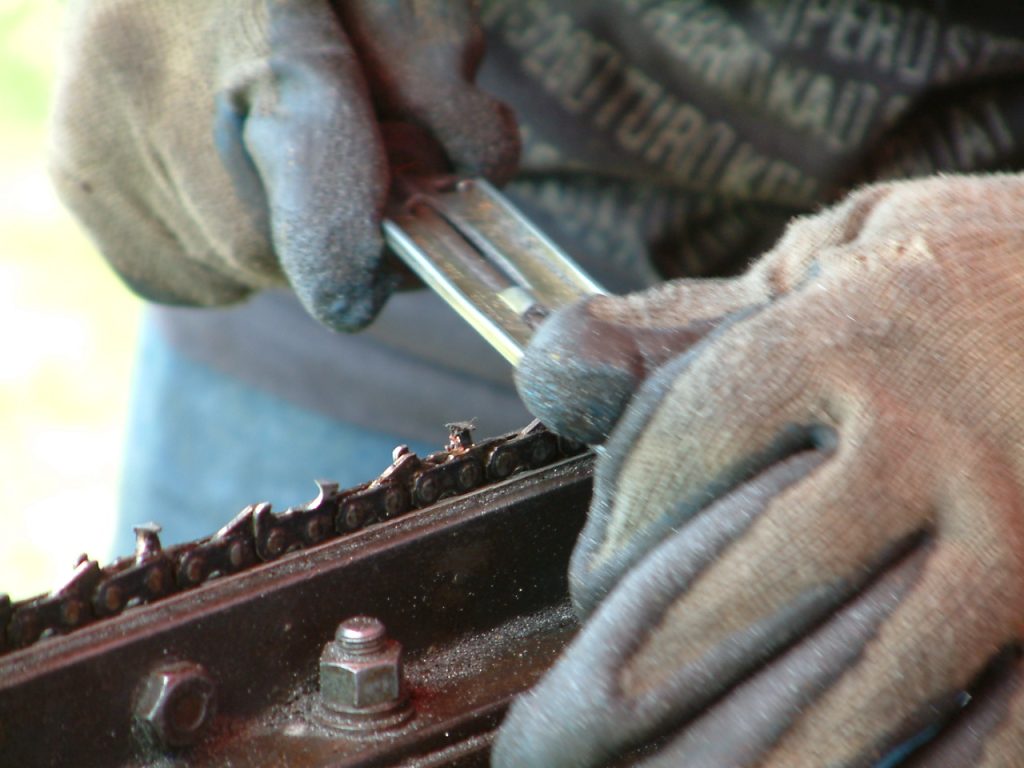
How long does a sharp chainsaw blade last?
How often you need to sharpen your saw depends entirely on how often you use it. When used occasionally, a chainsaw’s blade may only require sharpening once a year; when used often, however, the blade must be sharpened more frequently to prevent it from becoming too dull.
A chainsaw blade will typically keep its edge after aggressively cutting through wood for roughly three hours.
What’s causing the chainsaw blade to wear down so rapidly?
Several factors may contribute to the rapid wear of a chainsaw blade. Overuse, cutting through unclean wood, or dealing with tough wood like hickory, ironwood, or black oak are major causes of dulling.
How frequently should the bar of a chainsaw be flipped?
Depending on how often you use your chainsaw, you may want to flip the bar over after each use and clean it up, or you may want to leave it in the same condition until it’s time to change the chainsaw blade.
The frequency of flipping the bar isn’t as critical as long as it sometimes happens to help balance out the tool’s wear and tear.
